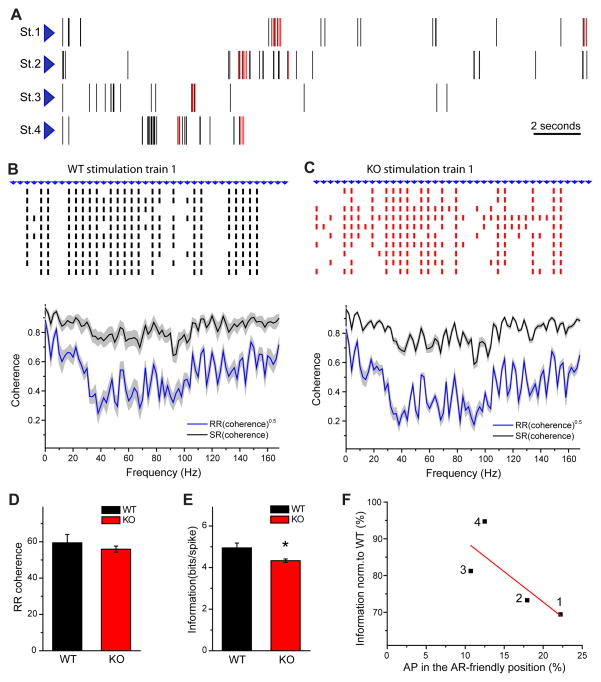Figure 10.
Impaired information transfer during natural-like stimulation patterns due to reduced asynchronous release. A) Four stimulation trains used in the experiments. Action potentials occurring under conditions when asynchronous release can be evoked are highlighted in red (22%, 18%, 12.5% and 11% of total stimulus number for stimulation trains 1, 2, 3 and 4 respectively). B) An example of postsynaptic responses (action potentials) evoked by the first stimulation train (St. 1; A) in WT (B, top) and KO (C, top) cells. Data is presented in binary format, 10 consecutive trials are shown. Averaged square rooted RR coherence and SR coherence calculated for responses to the St. 1 in WTs (B, bottom n=8) and KOs (C, bottom n=10). Integrated from 0 to 168 Hz RR coherence (D) and transferred information per spike (E). Information in response to the first stimulation train is significantly smaller in KOs, while coherence is similar. F) Difference in the total transferred information between WTs and KOs dependent on the percentage of action potentials occurring in asynchronous release friendly positions (see text for definition). Four points correspond to four different stimulation trains. Solid line corresponds to linear fit of the data. Total 19 WT neurons and 25 KO neurons were stimulated with 1 – 3 different stimulation patterns. *p < 0.05; Student’s t-test. Error bars show standard error of the mean (SEM).

